
Review on ⚡ Highpoint RocketStor 6661A Thunderbolt 3 to PCIe 3.0 X16 Expansion Chassis: Enhance your system with lightning-fast connectivity! by Adam Martin

while it works fine. on computer cases
Installation:* 27" iMac 5k with TB2 connectors.* HighPoint RocketStor 6661A* Third-party PCIe NVME adapter* USB 3.0 All-in-One NVME and 1TB SSD (for APFS Fusion) Some Pros: Quiet or no fans Reliable construction Easy to get into the unit Unobtrusive No crazy vibrations (I don't like fan or drive vibration) Cons: No power button (outer chassis) are always not widely used yet and the info there only focuses on the graphics. The one on NVME didn't cover that info. Now on to the TL user experience; DR: I wanted to look into Thunderbolt 3 for use with my 27" iMac 5k in the future (late 2015) test. I was very nervous at first as the device had bad reviews. I've had him for 2 weeks now and he's had some issues but I wouldn't say they're all to blame for Highpoint. I used an Apple TB3 (USB-C) to TB2 adapter to get this working on my iMac with TB2. I put the Vantec PCIe card in the case and used the regular 256GB Inland Professional NVME that I received in the Windows box. At the moment I had an extra SSD in a third-party TB2 docking station. My first step was to even see if macOS can see the device. When I first turned it on, it didn't recognize it and wouldn't turn on. I was starting to get nervous. For some reason he didn't like the Apple TB2 cable. I replaced it with a previously purchased third party TB2 cable. Voila. Here is the device. I reformatted and configured macOS to use a 480GB OCZ SSD combo with a 256GB internal NVME. This setup worked like a charm but had trouble waking up from hibernation. Apparently this is a known issue on many devices. It's not just a climax. I got around this by disabling certain power options like auto-off, standby, and hibernation using pmset. Now He was working brilliantly. However, NVME only had 256GB and I wanted more. I decided to return the TB2 dock and buy a 1TB NVME instead. The original 470GB OCZ SSD used USB 3.0 and I wanted to try the TB2 dock. However, I could not afford both the dock and the hull. Now you get macOS on a new APFS Fusion drive with a 1TB NVME plus an OCZ SSD (now in a USB 3.0 enclosure). That's when all the problems started. The merge was created automatically and installed 1 TB on the "primary" device and 480 GB on the "secondary (secondary) device". (Personally, I wish APFS could span drives or use JBOD like Windows Storage Spaces does. Fusion is currently the default.) I'll have to disable Highpoint in the next few days, fingers crossed and hope I can go for it boot and see the drive during selection, otherwise I'd get a folder with a blinking question mark, or have to reset PRAM. As a Mac old-timer, I remembered that Macs scan ports in a specific order at boot. Apparently this hasn't changed since In the old SCSI days, I began to wonder if Thunderbolt was last in the chain. I checked Disk Utility and found that the drive synthesized by APFS Fusion shows up as USB. Below that was the container and the volume. Each of them was shown as PCIe. I knew that must be a problem. Apparently it scanned the USB device before moving on to TB3 Ice Developer, which again resulted in a question mark. The system could not be found on the USB device because the system was on NVME. I reformatted and reinstalled but it always showed the same thing. You're probably wondering why you set it up that way in the first place. Well, even with TB2, NVME and USB SSD, I got 1200MB/s write and 1400MB/s read. Together they yielded 1.5 TB of solid love. It's a lot of space. What can I say? I'm greedy for space (punishment). Unfortunately, I had to redo the entire setup and manually create an APFS fusion drive with the slower 480GB SSD as the "primary" device and the 1TB NVME as the secondary (aux) device. Voila! Now it starts fine. He still doesn't respond to good sleep. Although this is a known issue. It's not just Highpoint, and I *used* generic NVME. (Domestic Premium without firmware patches) Is it fast? Not as fast as the original install, but that's just for testing. It's fast in loading. I get an error when launching applications. Sometimes without rebound. So yes. It's fast. Also, it may be better to have an extra drive to prevent general wear and tear on that drive. I'll let you know in about a month. crossed fingers
- Easy to use
- Suitable for
New products
Comments (0)
Top products in 🎒 Computer Cases
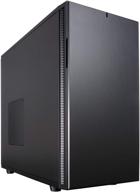
Fractal Design Define R5 - ATX Mid Tower Computer Case - High Airflow and Silent Optimized - Includes 2x Dynamix GP-14 140mm Silent Fans - Water-Cooling Ready - Black

43 Review
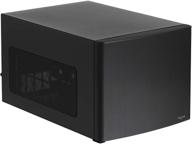
Fractal Design Node 304 - Black - Mini Cube Compact Computer Case - Small Form Factor - Mini ITX – mITX - Enhanced Airflow - Modular Interior - Includes 3x Fractal Design Silent R2 120mm Fans - USB 3.0

42 Review
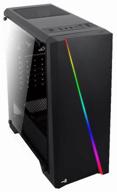
Computer case AeroCool Cylon black

39 Review

Computer case be quiet! Pure Base 500 black

32 Review
Another interesting products
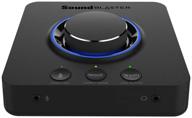
Enhance Your Audio Experience with the Creative 70SB181000000 Sound Blaster X3 Digital Audio Converter - Black

13 Review
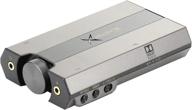
Enhance Your Gaming Experience with Sound BlasterX G6 Hi-Res DAC and USB Sound Card!

17 Review
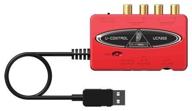
External sound card BEHRINGER U-CONTROL UCA222

16 Review
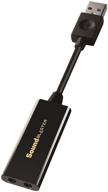
Creative Labs Sound Blaster Play! 3 External USB Sound Adapter - Compatible with Windows and Mac - Plug and Play (No Drivers Needed) - Enhanced 24-Bit 96Khz Playback Upgrade

53 Review

